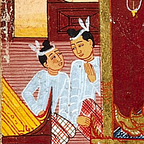The military’s digital oppression in post-coup Myanmar: new tricks, old playbook
The 54 million people of Myanmar have been subjected to unpredictable internet blackouts since Myanmar’s military, dubbed the Tatmadaw, staged a coup on 1 February. The military has responded with blatant repression, using the tools at its disposal to stifle popular dissent and to reshape the evolving narrative.
Quick to realize the threat that Myanmar’s millions of online netizens pose, the regime has effectively turned off the flow of internet without warning, part of a tried and true playbook. In the process, it has disenfranchised the country’s millions of internet users.
Timeline of events
- 1 February: Widespread telecoms disruptions begin at 3 am. Myanmar’s military stages an unconstitutional coup d’état. MP-elects, State Counsellor Aung San Suu Kyi, and President Win Myint, and other key civilian leaders, are detained.
- 3 February: The military regime forces all ISPs to block Facebook. MPT, Myanmar’s state-owned telecoms giant, blocks Facebook, Instagram, Messenger, and WhatsApp, while Telenor blocks Facebook. Facebook users in Myanmar begin migrating in droves to Twitter, popularising hashtags like #RespectOurVotes, #HearTheVoiceofMyanmar, and #SaveMyanmar. Use of VPN surges by over 7,000%.
- 5 February: The military regime forces ISPs to block Instagram and Twitter.
- 6 February: The military regime imposes a nation-wide internet outage. Facebook limits content distribution from Myanmar military-linked accounts, and regime’s ability to submit content removal requests.
- 7 February: Internet connectivity is partially restored, but social media platforms remain blocked, contrary to the Ministry of Transport and Communications’ prior announcements.
- 9 February: A 36-page draft cybersecurity bill proposed by the military regime is leaked to the public. The law would authorities give unprecedented censorship powers and violate privacy and fundamental rights.
- 11 February: 158 organisations condemn the proposed cybersecurity bill for infringing on personal rights.
- 14 January: Telenor announces it has been banned from the Myanmar government’s directives.
- 15 January: The military regime starts a national internet curfew, cutting off connectivity between 1 am and 9 am every evening.
- 16 February: Myanmar’s chamber of commerce urges the regime not to rush the cybersecurity bill, noting potential for hindering domestic digital growth and foreign investment.
- 17 February: Technology trade groups denounce the cybersecurity bill and call for substantial revisions.
- 19 February: The regime enacts draconian and wide-sweeping amendments to the Electronic Transactions Law, with “spread of fake news or disinformation” punishable with 3 years of jailtime.
Tangible impacts
The military regime’s blackout tactics have undoubtedly hampered people’s ability to access reliable, real-time information sources. The first of these internet blackouts fueled wild rumours and misinformation, such as Aung San Suu Kyi’s release (not true), the death of prominent NLD figures (not true), and the fall of the regime (also not true).
While the internet blackouts and social media bans have not quelled the size of protests throughout Myanmar, it has impacted the broad reach of the resistance, especially in remote, rural communities that lack the savvy to download and configure tools like VPN.
The ongoing resistance has spotlighted the urgent need to boycott the military-owned Mytel, which is a joint venture between Myanmar’s and Vietnam’s military. Netizens have added Mytel to a growing list of military-linked brands and firms to boycott.
The nightly internet curfew has also harmed digital storefronts, and businesses that have moved to digital channels in the wake of COVID-19.
The long road to connectivity
Myanmar has come a long way since 2013, when it liberalised the telecoms sector and opened the digital front door for millions of ordinary people. In 1997, a SIM card cost $7,000 USD. Fourteen years later, by 2011, a SIM card still cost $1,500 USD. The exorbitant prices put internet access out of reach for most people. To put things into perspective, in terms of internet connectivity, Myanmar was ranked 2nd lowest in the world, immediately below North Korea.
By 2014, the price of a SIM card had dropped to $1.50, reflecting the impact of increased competition and market forces at play. From that liberalisation emerged 4 telecoms giants: the state-owned MPT, the Burmese and Vietnamese military co-owned Mytel, Norwegian-owned Telenor, and Qatar-owned Ooredoo. Quickly decreasing costs served to democratise access to the internet, which has become synonymous with Facebook in Myanmar. By 2018, smartphone penetration stood at 80%. Immediately before the coup, Facebook counted 28.78 million users in Myanmar, well over half of the country.
I still remember the days when writing handwritten letters or word-of-mouth was sometimes the easiest way to reach people, or when using shared phone numbers or home-made doorbell contraptions was the norm. With increased internet penetration, the unfathomable has become real in recent years. Relatives from rural villages in the Ayeyarwady delta are now just one Facebook message away. It’s incredible how much progress we’ve made, but it’s now all at risk.
Footnotes
This is an evolving story.
